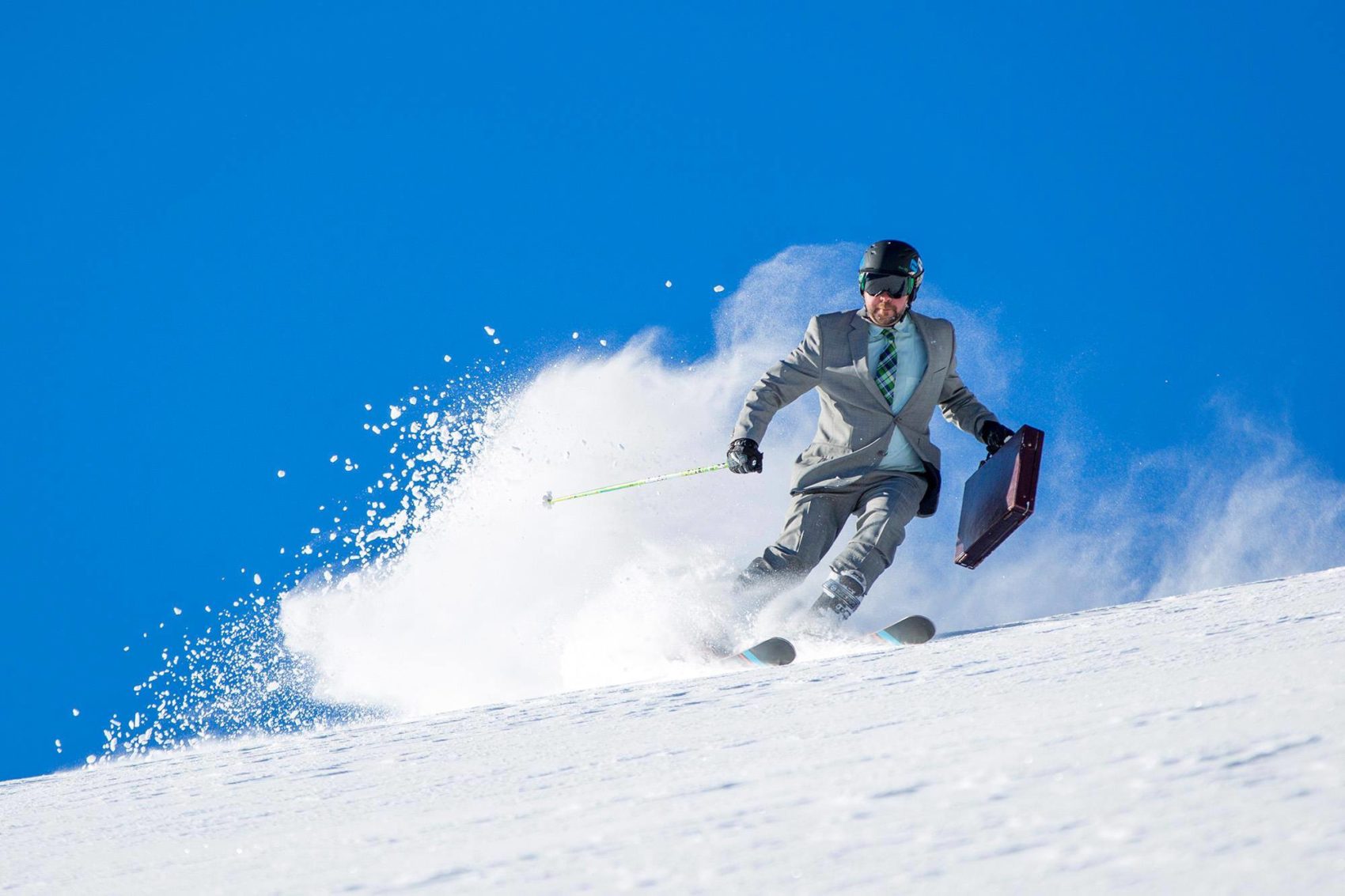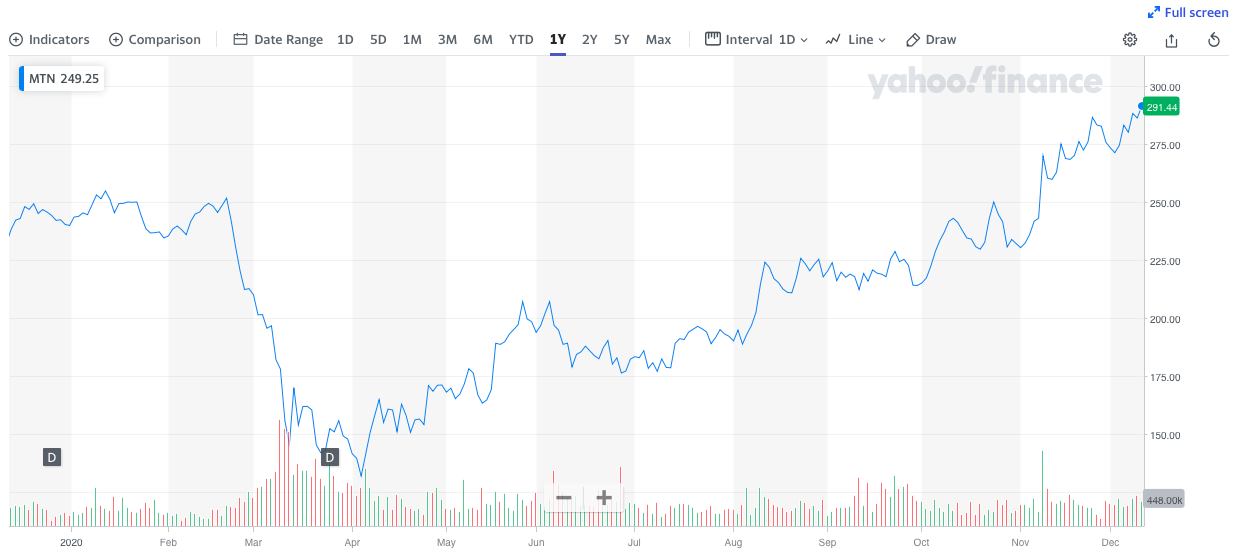
Yesterday, Vail Resorts announced a net loss of $153.8-million in the first quarterly earnings call of their 2021 fiscal year. The loss represents a decrease of 44.4% compared to the same quarter last year as the reality of covid-19 bites. Revenue of $136 million was down 50.8% year over year.
Our results for the first quarter continued to be negatively impacted by COVID-19 in Australia, Hotham and Falls Creek remained closed for the entire quarter following the issuance of stay at home orders by the Victorian government on July 8, 2020, resulting in a significant decline in revenue compared to the prior year period.
In North America… …summer visitation remained well below historical levels. At Whistler Blackcomb, demand remained significantly below prior year levels due in part to travel restrictions, with the Canadian border remaining closed the entire quarter to international guests, including guests from the U.S.
– Vail Resorts CEO Rob Katz
Vail historically reports a net loss during its July and October quarters, the period between ski seasons at most of its mountain resorts and ski areas.
Despite the significant loss, Epic Pass product sales were up approximately 20% in units, a point that gave Katz reason to be pleased. More than 1.4-million people purchased pass products in advance, exceeding expectations. However, due to pass credits returned to customers due to the truncated 19/20 season, pass sales were flat in dollar value compared to last year.
We are very pleased with the growth in our season pass program, particularly given the challenging circumstances surrounding the impacts of COVID-19. We expect that the total number of guests on all advanced purchase passes this year will exceed 1.4 million including all passes for our North American and Australian resorts, demonstrating the significant loyalty of our guest base and the strong demand for our mountain resorts.
– Vail Resorts CEO Rob Katz
With the uncertainty surrounding the upcoming season, Michael Barkin, CFO, was unwilling to offer guidance for the fiscal year ahead. Mandatory capacity limitations at resorts, and border closures preventing travel, especially to Whistler and Vermont ski areas, will obviously have a negative financial impact as will closed on-mountain food and beverage facilities.
While we expect that mandated capacity limitations will have a negative impact on our visitation during peak periods, we expect the primary driver of visitation declines for the North American ski season to be a result of reduced travel demand. We expect additional negative impacts to visitation in select regions where heightened restrictions exist, including Whistler Blackcomb, given Canadian border closures and domestic travel guidance, and Vermont as a result of the quarantine policy for out-of-state travelers.
– Michael Barkin, Vail Resorts CFO
As a result of covid-19, several capital improvements at ski resorts were deferred from the calendar year 2020, but Katz confirmed yesterday these would go ahead in 2021. A full capital expenditure plan will be issued in March 2021. The deferred projects that will now go ahead, costing between $100 million and $115 million, are:
- Beaver Creek, CO: a new 250-acres lift-served beginner and intermediate bowl experience in the McCoy Park area
- Breckenridge, CO: a new four-person high-speed lift to serve the popular Peak 7
- Keystone, CO: replace the four-person Peru lift with a six-person high-speed chairlift
- Crested Butte, CO: replace the two-person fixed-grip Peachtree chairlift with a new three-person fixed-grip lift
- Okemo, VT: upgrading the Quantum lift from a four-person to a six-person high-speed chairlift, relocating the existing four-person Quantum lift to replace the Green Ridge three-person fixed-grip chairlift
Despite the loss and the uncertain times, Vail Resorts still has $614-million of cash. Should, worst-case scenario, all resorts shut down again, the company has sufficient liquidity to fund operations through at least the 2021/2022 ski season.

In the post-call Q&A, Katz was asked what might happen if the Colorado counties where Vail’s resort are based (Summit and Eagle) were to go into the highest level of severity, purple, and how that might impact their ability to run lifts:
We’re in communication at both the local county and state level on an ongoing basis, high-frequency dialogue. But other than what is out there in the regulations that are posted, no, we don’t have additional information. And it isn’t just — it’s obviously decisions that are — that would be made at both the state level and at the county level. So both of those would ultimately be critical players in terms of whatever decisions are made if we move beyond that. What I can say is, I think, obviously, both Summit County and Eagle County are working very intensely to bring down the caseload and to get to a decreasing slope and I know that Eagle County is very focused as we are keeping them in orange for right now. Whether that’s possible, we’ll see. And I know Summit County is looking obviously to hopefully move from red to orange.
So again, a lot of work going on, on every level, but exactly what the outcome will be or what the regulations would be if they move to the purple at this point? Yes, not 100% clear.
– Vail Resorts CEO Rob Katz
Finishing the call, Katz reiterated their commitment to the safety of their employees and guests during these difficult times and their intention to stay open all winter:
The safety of our guests, employees and communities continues to be our top priority. As previously mentioned, we implemented operating procedures that we believe will enable us to operate safely across our 34 North American ski resorts throughout the season, including the implementation of a reservation system for our guests.
– Rob Katz
Sell ! Sell ! Sell !
Dump your Vail stocks .
Vail resorts has the worst customer service in the ski resort business, the shareholders profit is the only thing that matters.